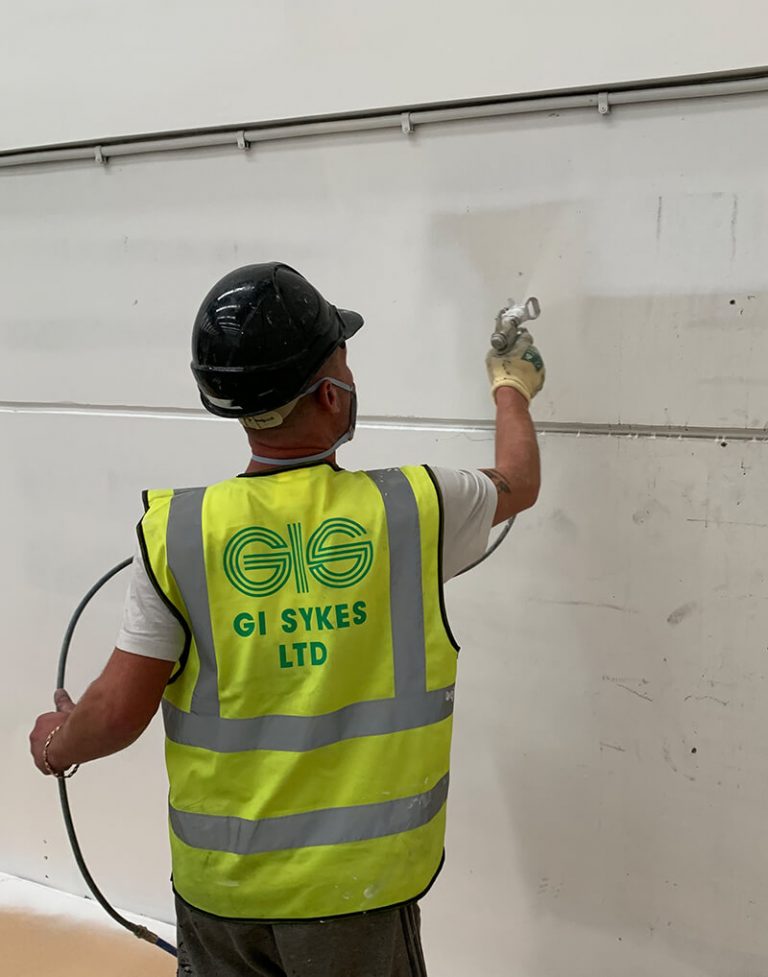In the fast-paced world of commercial and industrial building management, keeping your facility in optimal condition is crucial to ensuring efficient daily operations, presenting a professional image, and maximising the building’s lifespan. A proactive and preventative approach to building maintenance is instrumental in mitigating risks, identifying potential issues before they become critical, and optimising the overall cost-effectiveness of your building management strategy.
G.I.Sykes, a renowned specialist in commercial and industrial building maintenance services, understands the value of a proactive maintenance plan and offers expert advice, resources, and skilled contractors to help facility managers stay on top of their building’s needs. By employing a wide array of services, including on-site spraying, application of protective coatings, and various building services, G.I.Sykes is committed to assisting clients in achieving and maintaining a well-organised, future-proof maintenance strategy.
In this comprehensive blog post, we will provide an in-depth exploration of the importance of a preventative approach in commercial and industrial building maintenance. We will discuss the benefits associated with implementing proactive maintenance plans, guidance on how to develop and execute such strategies, and the role that expert contractors like G.I.Sykes play in helping you achieve your building maintenance goals. By embracing a proactive and preventative mindset, you can minimise potential disruptions, reduce long-term maintenance costs, and protect the value of your commercial or industrial facility for years to come.
I. Understanding the Benefits of a Proactive Maintenance Plan
Adopting a proactive and preventative approach to building maintenance has several advantages. Some of the key benefits include:
- Minimising Disruptions: By identifying potential issues before they become critical, preventative maintenance helps minimise disruptions to daily operations, reducing downtime and ensuring a smooth-running facility.
- Cost-Effectiveness: Proactive maintenance can detect problems before they escalate, allowing for more straightforward and less expensive fixes. This approach reduces the need for costly repairs and replacements in the long run.
- Enhanced Building Longevity: Regular inspections and maintenance help to prolong the life of building components and systems, ensuring the continued structural integrity and sustainability of your facility.
- Improved Health and Safety: Preventative maintenance plays an essential role in maintaining a safe working environment by addressing potential hazards before they become significant threats.
- Professional Image: A well-maintained facility presents a professional image to clients, customers, and other stakeholders, reflecting positively on your business.
II. Developing and Executing a Preventative Maintenance Strategy
A successful preventative maintenance plan involves several critical steps. Here are some guidelines to help you develop and implement an effective strategy:
- Compile an Inventory: Begin by creating an inventory of all building components and systems that require regular maintenance, including electrical systems, plumbing, HVAC systems, roofs, walls, and flooring.
- Determine Maintenance Frequency: Assess the recommended maintenance frequency for each item on your inventory and establish a suitable schedule. Ensure that you take into account factors such as age, usage, and environmental conditions that may impact maintenance requirements.
- Assign Responsibilities: Clearly define the person responsible for overseeing or completing each maintenance task, and ensure they have the necessary resources and training to carry it out effectively.
- Monitor and Review: Regularly monitor and review your maintenance plan to ensure it remains effective, adjusting it as needed to accommodate changes in your building’s usage or condition, as well as technological advancements.
- Documentation: Maintain detailed records of all maintenance activities, including dates, tasks completed, required repairs or replacements, and associated costs. This documentation will help you identify patterns, optimise your maintenance plan, and provide invaluable data for budgeting purposes.
III. The Role of Expert Contractors in Preventative Maintenance
Expert contractors like G.I.Sykes serve as invaluable partners in your preventative maintenance efforts, offering comprehensive expertise, skilled professionals, and a range of services to ensure your facility remains in peak condition:^
- Expert Knowledge: G.I.Sykes’s experienced contractors have extensive knowledge of commercial and industrial building maintenance, offering invaluable advice and guidance on service frequency, suitable methods, and industry best practices.
- Skilled Technicians: A professional contractor brings a team of skilled and fully trained technicians to tackle each maintenance task with precision, ensuring a successful outcome every time.
- Comprehensive Services: G.I.Sykes provides a wide range of services, including on-site spraying, the application of protective coatings, and various building services, tailored to your specific maintenance needs.
- Quality Assurance: By partnering with an expert contractor like G.I.Sykes, you can be confident that all maintenance work will be carried out to the highest standards, with a focus on safety, efficiency, and long-term results.
IV. Embracing a Culture of Proactivity in Building Maintenance
For a truly effective preventative maintenance strategy, it is essential to create a culture of proactivity within your organisation. Here are some tips to help foster this mindset:
- Training and Communication: Ensure that all staff members have access to training and resources that empower them to identify and report potential maintenance issues, fostering a sense of shared responsibility.
- Investments: Recognise the value of investing in preventative maintenance, providing the necessary budget, resources, and time for regular inspections, upkeep, and the implementation of corrective measures.
- Metrics and Accountability: Establish key performance metrics for maintenance activities and hold all parties accountable for meeting these targets, reinforcing the importance of a proactive approach.
Conclusion
By embracing a preventative and proactive approach to commercial and industrial building maintenance, you can protect the value, efficiency, and longevity of your facility. Partnering with expert contractors like G.I.Sykes is crucial in ensuring that your maintenance strategy is implemented effectively, providing you with the peace of mind that your building remains in top condition. As you strive to master proactive building maintenance, you’ll reap numerous benefits, including cost savings, increased productivity, and a proud, professional image for your business. Contact our commercial building contractors now.



